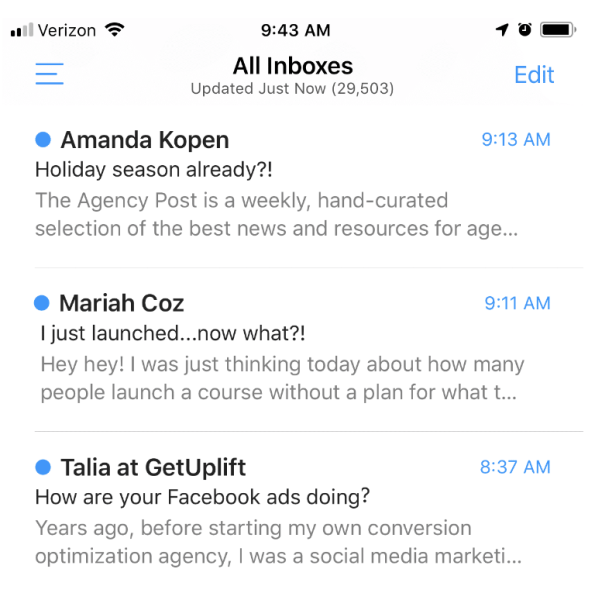Para qualquer empresa se manter competitiva, uma forte estratégia de Marketing Digital é essencial. Se tem uma pequena empresa, uma boa estratégia de marketing digital é essencial se quiser posicionar-se à frente da concorrência. À medida que a tecnologia continua a desenvolver-se a um ritmo alucinante, a comunicação online e as próprias plataformas de redes sociais crescem em dimensão e importância, pelo que garantir a sua presença digital já não é algo opcional, mas sim essencial.
De fato, 63% das empresas aumentaram os seus orçamentos de marketing digital no ano passado, portanto, ao não fazê-lo, corre o risco de ficar para trás.
 Fonte: Statista
Fonte: Statista
Alocação de orçamento para online marketing de acordo com CMOs em todo o mundo em março de 2022, por canal
Vamos então explorar algumas estratégias de Marketing Digital que pode pôr em prática na sua empresa, independentemente da sua dimensão ou budget.
1. Conheça o seu público-alvo
A primeira etapa para uma estratégia de marketing digital eficaz é entender quem é o seu público-alvo. Isso inclui conhecer as suas preferências, comportamentos e necessidades. Com essas informações, poderá criar campanhas de marketing mais direcionadas e eficazes.
Será necessário elaborar relatórios que o ajudem a estudar e a manter um registo das principais características dos seus clientes e potenciais clientes, pelo que deve ter isso em mente no aperfeiçoamento de qualquer estratégia.
2. SEO (Search Engine Optimization)
O SEO é uma estratégia de marketing digital de baixo custo que pode gerar um alto retorno de investimento. Ao otimizar o seu site para motores de pesquisa, poderá aumentar a visibilidade do seu negócio e atrair mais tráfego para o seu site.
Na sua forma mais simples, as boas práticas de SEO utilizam palavras-chave no seu site para ajudar a impulsionar o desempenho e garantir que tenha uma classificação mais alta nos resultados de pesquisa online. Ao fazer isso, é mais provável que sua empresa seja reconhecida e o tráfego para o seu site aumente.
Uma boa estratégia de SEO também pode ajudar a sua pequena empresa:
- A construir confiança com os seus clientes;
- A melhorar organicamente a sua visibilidade;
- A aumentar a sua credibilidade;
- A maximizar estratégias de marketing pago;
- A expandir o seu alcance;
- A melhorar a usabilidade do site;
- A impulsionar as taxas de engagement dos utilizadores.
O conteúdo incorporado de SEO deve sempre ser impactante e direcionado ao tráfego, e é por isso que tantas empresas agora empregam especialistas em SEO. No entanto, se a sua pequena empresa estiver restrita a um orçamento apertado, existem vários pequenos cursos e tutoriais online e em vídeo que poderão ensinar-lhe aquilo que precisa de saber para alavancar esta estratégia essencial.
3. Marketing de conteúdo
O marketing de conteúdo é outra estratégia de baixo custo que pode ser muito eficaz. Ao criar conteúdo relevante e de alta qualidade, conseguirá atrair e envolver o seu público-alvo, aumentando a sua reputação e visibilidade online.
A pesquisa gera 53,3% do tráfego global da Web (dos quais o Google detém uma grande participação de mercado de 92%). Os 46,7% restantes são provenientes do tráfego total combinado de redes sociais, anúncios de pesquisa pagos, anúncios gráficos, tráfego direto, tráfego de email e tráfego de referência de outros sites.
Portanto, claramente, uma das maneiras mais eficazes de atrair clientes para a sua loja online com um orçamento limitado, é publicar conteúdo relevante no seu website e blog direcionado às palavras-chave que as pessoas usam ao procurar uma solução no seu nicho.
Ao criar conteúdo informativo e envolvente que aparece regularmente nos resultados de pesquisa, atrairá leitores que, de outra forma, não encontrariam o seu site. Isso pode incluir artigos sobre seus produtos ou serviços, notícias do setor ou dicas e conselhos para os consumidores.
Aqui, outra dica importante é lembrar-se de não trabalhar o conteúdo apenas para os motores de pesquisa, mas também – e acima de tudo – para leitores humanos, especialmente aqueles que ainda valorizam conteúdo de qualidade.
Leia também: Funil de Marketing de Conteúdos: um mini-guia definitivo
A Ikea tem várias publicações no seu site nas quais aborda diversos temas de lifestyle relevantes ao seu público-alvo e aproveitando sempre a oportunidade para fazer a ligação a produtos que vende nas suas lojas.
Ainda que este seja um artigo mais direcionado a pequenas empresas, nada o impede de tirar inspiração de “gigantes” como a Ikea.
4. Redes sociais
As redes sociais são uma ferramenta poderosa para empresas de qualquer dimensão. Elas permitem que se conecte diretamente com o seu público-alvo, construa relacionamentos e promova o seu negócio. Além disso, muitas plataformas de redes sociais oferecem opções de publicidade de baixo custo que podem ser altamente direcionadas.
Outra maneira económica de publicitar o seu negócio é desenvolver uma presença nas redes sociais. Isto envolve a criação de perfis em plataformas como o Facebook, Twitter, Instagram, TikTok e LinkedIn e, em seguida, envolver-se ativamente com os seus seguidores, publicando conteúdo de qualidade, respondendo a comentários e fazendo networking com outras empresas.
A chave para uma presença bem-sucedida nas redes sociais é publicar conteúdo que ressoe com seu público-alvo e interagir com os utilizadores/seguidores regularmente para construir relações.
Mas para que essa estratégia dê frutos, precisa de conhecer muito bem os dados demográficos (quem são) e psicográficos (o que pensam e sentem) do seu público — caso contrário, as suas mensagens podem não ter o efeito que deseja.
Para além disso, precisa ainda de descobrir quais as plataformas de social media que o seu público-alvo frequenta para poder concentrar os seus esforços apenas nas plataformas que contam. Ou seja, não irá compensar estar em todas as plataformas ao mesmo tempo, mas sim nas plataformas certas.
Por exemplo, se seu público-alvo é formado por clientes com potencial B2B, publicar regularmente no LinkedIn é uma resposta lógica e acertada, ao invés de concentrar a maior parte dos seus esforços no TikTok ou no Instagram.
Por outro lado, se tiver uma loja online que vende roupas ou acessórios para adolescentes e jovens adultos, o TikTok e o Instagram provavelmente serão a sua melhor escolha para se ligar a este público-alvo.
Algumas dicas para criar conteúdo de valor nas redes sociais:
- Promova as publicações do blog da sua empresa com link para o website, para aumentar o tráfego;
- Converse diretamente com os seguidores para expressar a voz da sua marca e obter mais engagement;
- Faça sondagens e solicite feedback;
- Utilize excertos de formas de conteúdos mais longos e crie publicações rápidas e informativas que são mais fáceis de consumir.
O mundo das redes sociais e do Social Media Marketing é vasto, complexo e em constante mudança. Não se sinta culpado por não saber navegá-lo intuitivamente à primeira. Se tiver vontade de aprender mais, existem vários tutoriais e vídeos para o orientar e ajudar a navegar nestas águas misteriosas.
Leia também: Como criar e definir o seu público-alvo nas redes sociais
 Fonte: United Colors of Benetton
Fonte: United Colors of Benetton
Caso tenha uma loja online, poderá aproveitar partilhas de influenciadores ou de seguidores que partilhem conteúdo no qual estão a utilizar os seus produtos. Ter uma secção no seu site com conteúdo deste género, é uma excelente ideia.
5. Email Marketing
O email marketing é uma das estratégias de marketing digital mais eficazes em termos de custo. Ele permite que se conecte diretamente com os seus clientes, fornecendo-lhes informações relevantes e ofertas personalizadas.
Apesar do aumento da utilização das redes sociais e de outras ferramentas de marketing digital semelhantes, o email marketing ainda é uma parte fundamental de qualquer estratégia de marketing digital bem-sucedida.
Independentemente da idade, quase toda a gente usa um email, o que significa que tem a oportunidade de expandir o seu alcance e atingir pessoas de todos os dados demográficos e origens. No entanto, é importante segmentar, ou seja, curar o conteúdo aos diferentes segmentos de clientes ou leads que tem na sua lista de contactos ou mailing list.
Newsletters informativas mensais, promoções, notícias e passatempos/sorteios são ótimas maneiras de se envolver com o seu público por meio de emails. Também é uma ótima opção de baixo custo que permite personalizar as suas mensagens para ajudar a sua marca a conectar-se com o seu público-alvo a um nível mais profundo.
Dicas rápidas
Embora o Marketing Digital possa parecer uma tarefa desafiadora para pequenas empresas com orçamentos limitados, com as estratégias certas, é possível obter um alto retorno do investimento. Ao conhecer o seu público-alvo, otimizar o seu website para motores de pesquisa, criar conteúdo de alta qualidade, utilizar as redes sociais e o email marketing, pode maximizar o seu orçamento de marketing e alcançar o sucesso online.
- Pesquise os seus concorrentes: conhecer as marcas dos concorrentes e o que eles oferecem é um bom ponto de partida. Isto é especialmente relevante para novas startups que ainda estão a apalpar terreno e a tentar conquistar o seu lugar;
- Fale com os clientes e entenda o seu público: falar com clientes existentes e potenciais é absolutamente essencial, seja através de ações, sondagens ou de community management; o importante é descobrir tudo o que for possível sobre o seu público-alvo;
- Crie uma conta no Google My Business e melhore as avaliações dos clientes: ter uma listagem no Google My Business é uma ótima maneira de melhorar a sua visibilidade online;
- Aperfeiçoe o seu website: há inúmeras maneiras de melhorar e desenvolver o seu site, mas acertar os fundamentos primeiro é absolutamente essencial;
- Crie conteúdo interessante: o conteúdo é rei. Sejam postagens de blog ou vídeos, o conteúdo que produz é uma das melhores ferramentas de marketing digital que existem;
- Otimize o seu website para utilizadores de dispositivos móveis: é incrivelmente importante que o seu site seja adequado para telemóveis, uma vez que é onde ocorrem a maioria das visualizações hoje em dia;
- Entenda e melhore o seu SEO: nenhuma estratégia de marketing digital está completa sem considerar o SEO,
- Escolha a plataforma de social media que seja melhor para o seu negócio: cada vez mais, as redes sociais a tornar-se uma das ferramentas mais importantes que uma empresa pode usar como parte de sua estratégia de marketing digital;
- Desenvolva o email marketing: apesar do aumento da utilização das redes sociais e de outras ferramentas de marketing digital semelhantes, o email marketing ainda é uma parte fundamental de qualquer estratégia de marketing digital bem-sucedida;
- Entre em contato com influenciadores: trabalhar com influenciadores é uma ótima maneira de fazer com que a sua pequena empresa seja reconhecida e aumente o reconhecimento junto do seu público-alvo.
 Fonte: WordStream
Fonte: WordStream
Não existem estratégias de marketing sem falhas
Apesar de termos partilhado consigo algumas estratégias que poderão ajudar a aumentar a notoriedade, o alcance, engagement e, quiçá, as vendas do seu negócio, saiba que não tem (nem deve) colocar todas as estratégias de marketing em curso. Algumas serão apropriadas ao seu negócio e budget, outras não. Especialmente no que diz respeito a tendências, não se sinta pressionado a embarcar em todas. Também não deverá ter receio de testar e falhar, uma vez que esse é precisamente o caminho que leva às aprendizagens mais valiosas.
Teste, repita, analise e abandone as estratégias que não funcionarem para si.
Se precisar de ajuda para desenvolver uma estratégia de marketing digital 100% personalizada ao seu negócio, fale connosco.












 Fonte: unlayer
Fonte: unlayer Fonte: unlayer
Fonte: unlayer Fonte: unlayer
Fonte: unlayer Fonte: unlayer
Fonte: unlayer Fonte: unlayer
Fonte: unlayer Fonte: duolingo
Fonte: duolingo Fonte: litmus
Fonte: litmus Fonte: mailtrap
Fonte: mailtrap Fonte: Adobe
Fonte: Adobe Fonte: Canva
Fonte: Canva Fonte: envato
Fonte: envato Fonte: Rifle Paper Co.
Fonte: Rifle Paper Co.

 Fonte: Statista
Fonte: Statista






 Source: Mint
Source: Mint